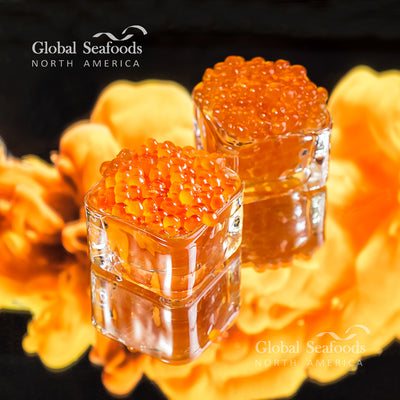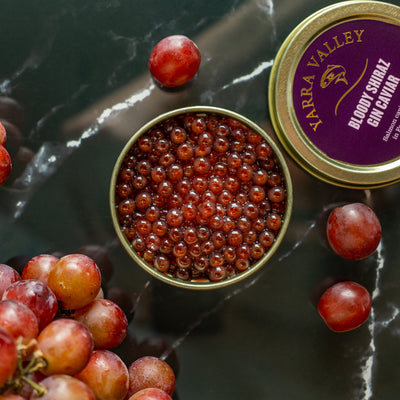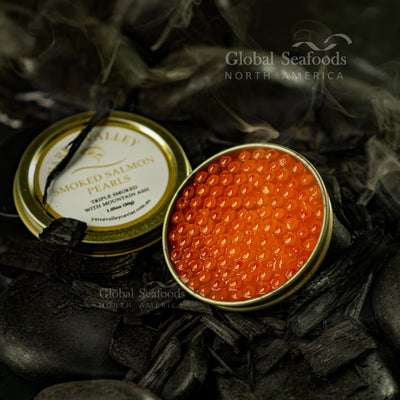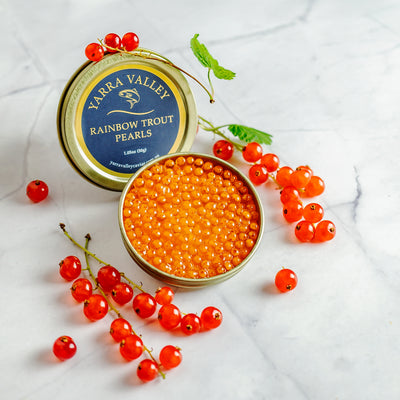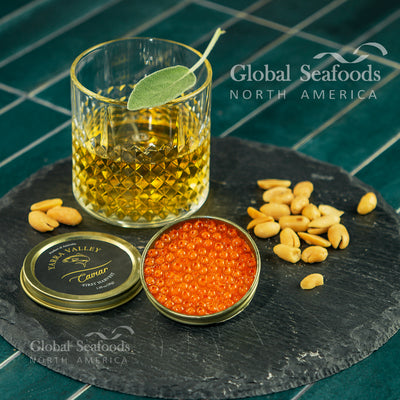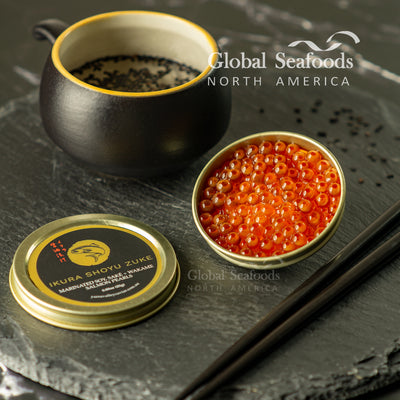Exploring the Delicacy of Trout Roe: A Culinary Delight

World of Trout Roe
Trout roe, also known as trout caviar, is a culinary delicacy that has been savored for centuries. These tiny, jewel-like fish eggs add a burst of flavor and texture to any dish they accompany. In this blog post, we'll delve into the history of trout roe, its unique flavor profile, nutritional benefits, cost, and how to use it to elevate your culinary creations.
History of Trout Roe
Trout roe has a rich history dating back to the 16th century when it was commonly enjoyed in Europe and Russia. It wasn't until the 19th century that it gained popularity in the United States. Today, trout roe is harvested worldwide and can be found in high-end restaurants and specialty markets. The eggs are harvested from freshwater rainbow trout and are prized for their delicate texture and distinctive flavor.
Trout in the Columbia River
The Columbia River is one of the prime habitats for rainbow trout, which produce high-quality roe. The river's clean, cold waters provide an ideal environment for trout, resulting in roe with excellent texture and flavor. The Columbia River basin's sustainable fishing practices ensure that trout populations remain healthy, making it a reliable source of this luxurious delicacy.
Flavor Profile of Trout Roe
Trout roe boasts a unique flavor profile that is both savory and slightly sweet. The eggs are firm to the touch and pop in your mouth, releasing a salty burst of flavor. This delicate caviar has a smooth texture and pairs well with a wide variety of ingredients.
Nutritional Benefits of Trout Roe
Trout roe is not only a culinary delight but also a nutritious addition to your diet. Here are some of the nutritional benefits:
- High in Protein: A great source of high-quality protein, essential for muscle growth and repair.
- Rich in Omega-3 Fatty Acids: Supports heart health, brain function, and reduces inflammation.
- Packed with Vitamins and Minerals: Contains significant amounts of vitamins A, D, and E, as well as essential minerals like calcium, magnesium, and phosphorus.
Nutritional Details (per 100 grams)
- Calories: 250 kcal
- Protein: 29 grams
- Fat: 14 grams
- Omega-3 Fatty Acids: 3 grams
- Vitamin A: 2710 IU
- Vitamin D: 232 IU
- Vitamin E: 5 mg
- Calcium: 275 mg
- Magnesium: 120 mg
- Phosphorus: 490 mg
Cost of Trout Roe
The cost of trout roe can vary depending on the source and quality. On average, you can expect to pay:
- $20-$40 for a 2-ounce jar: Affordable options typically come from smaller, less well-known producers.
- $50-$70 for a 2-ounce jar: Higher-end options sourced from renowned suppliers with a reputation for quality.
Uses of Trout Roe
Trout roe is a versatile ingredient that can be used in numerous dishes. Here are some ways to incorporate it into your culinary repertoire:
- Canapés and Blinis: Top your canapés or blinis with a spoonful of trout roe for a sophisticated touch.
- Crackers: Spread cream cheese on crackers and add trout roe for a delightful appetizer.
- Seafood Dishes: Enhance your sushi and sashimi with a garnish of trout roe.
- Pasta and Salads: Sprinkle trout roe over pasta dishes and salads for an extra burst of flavor.
- Deviled Eggs: Add trout roe to deviled eggs for a luxurious twist.
FAQs
Is trout roe sustainable? Yes, trout roe is considered a sustainable seafood option, especially when sourced from regions with responsible fishing practices like the Columbia River.
How should I store trout roe? Trout roe should be stored in the coldest part of your refrigerator, ideally at 32-35 degrees Fahrenheit. It is best consumed within 5-10 days after opening.
Can I freeze trout roe? Yes, trout roe can be frozen for up to 3 months. Thaw it in the refrigerator before using to maintain its texture and flavor.
Should I keep trout roe next to uncooked meat or fish? No, avoid storing trout roe next to uncooked meat or fish to prevent cross-contamination and ensure it retains its delicate flavor.
Conclusion – Why You Should Try Trout Roe
Trout roe is a delicate and flavorful delicacy that enhances any dish with its vibrant color, popping texture, and rich umami taste. Whether you're a gourmet chef or a home cook, this nutrient-rich ingredient offers exceptional versatility—perfect as a sushi topping, a garnish for seafood dishes, or an elegant addition to canapés and pasta.
With its high protein content, omega-3 fatty acids, and essential vitamins, trout roe is not only delicious but also incredibly nutritious. If you're looking to elevate your culinary experience, now is the time to explore and indulge in premium-quality trout roe.
📌 Shop the best trout roe selections today:
🔗 Explore Global Seafoods’ Red Caviar Collection
Discover More High-Quality Caviar Options:
🔗 Chum Salmon Caviar Soft Shell
🔗 Coho Salmon Caviar
🔗 King Salmon Caviar
🔗 Trout Caviar
🔗 Trout Red Caviar
📺 Watch seafood tutorials & trout roe recipes on YouTube:
🔗 Global Seafoods YouTube Channel
Also in News

How to Make Sea Bream Sushi With Dry-Aged Tuna & Crab Roll — Step-by-Step With Chef Joshua
A complete guide to making Sea Bream sushi at home, including filleting, curing, slicing, and building a Dry-Aged Tuna & Crab sushi roll. Chef Joshua shares professional tips for restaurant-quality results.

The Boiled Crab in Popular Culture: From Cajun Cuisine to Trendsetting Restaurant Phenomenon
From spicy Cajun-inspired seafood boils to hands-on dining experiences, The Boiled Crab has left a unique mark on popular culture. Discover its cultural roots and culinary influence.

Boiled Crab for Game Night: Everything You Need for a Perfect Seafood Party
Take your game night to the next level with a Boiled crab party. Learn the best recipes, cooking tips, and hosting hacks for a memorable seafood feast.

